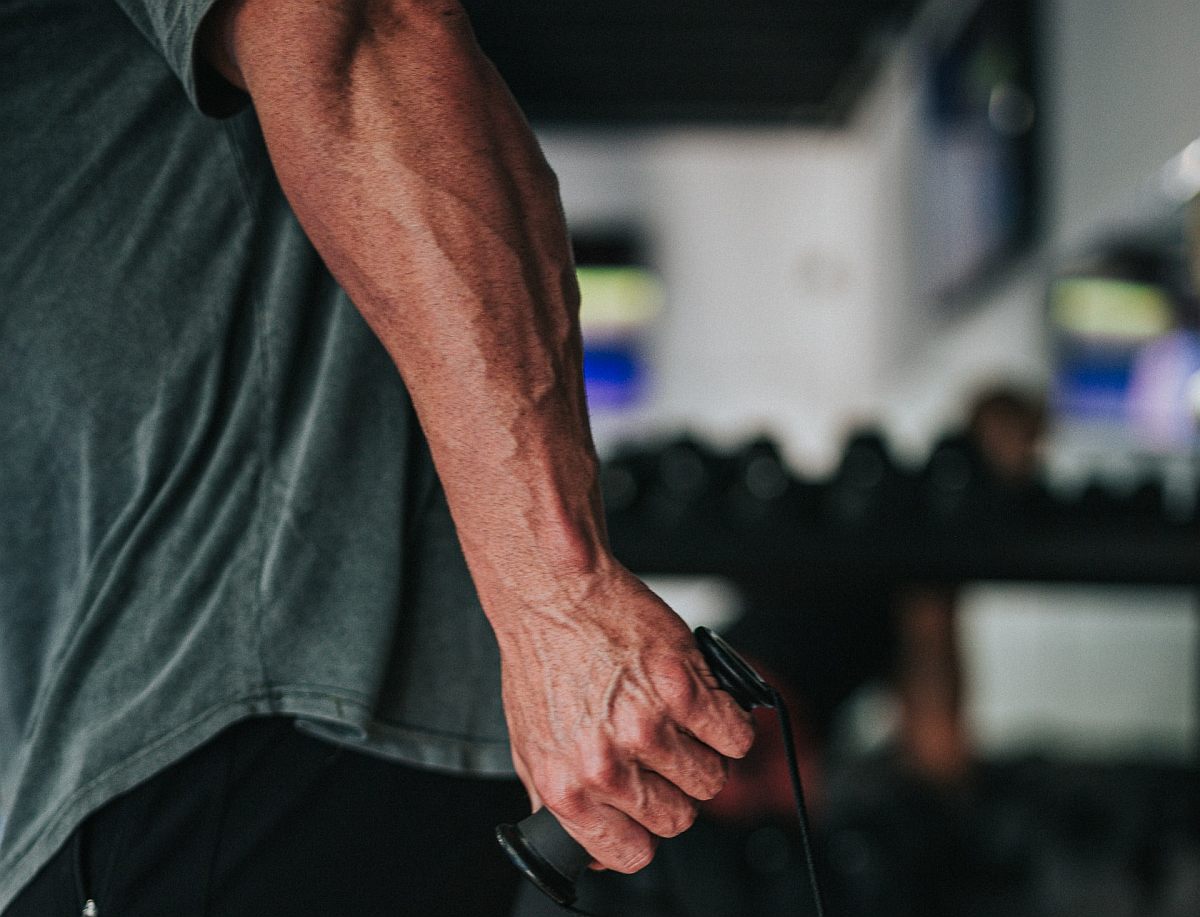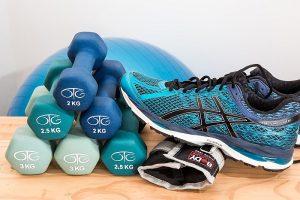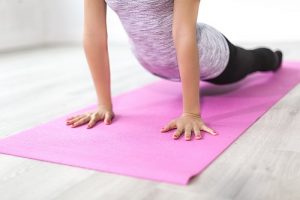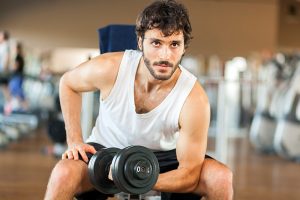Chances are, you’ve seen someone with incredible-looking forearms. They’re healthy and lean, and you can obviously tell they workout.

Most people would assume it’s just genetics, but that’s actually not the case.
Getting vascular forearms can be done (I know because I’ve done it.)
The following tips presented in this article will set you up with everything you need to get them yourself.
With all that said, let’s get to it!
The Science of Vascular Forearms
So how do you get aesthetically pleasing forearms? Can it be done overnight? And how soon can you expect to see results?
In this article, we’ll cover everything you need to know about getting vascular forearms.
Specifically, we’ll get into:
- The best diet
- Science-based natural supplements
- Custom workout routine
- Bonus Tips
- And more…
So, without further ado, let’s get started.
The Basics
For starters, you need to understand a couple of simple rules when it comes to getting good-looking forearms.
The first is that you’ll never be able to have veiny forearms if you’re not at a low enough body fat percentage.
This means having your diet and workouts in check (which we’ll get into later in this article.)
But it also means that if you’re overweight, then nothing else matters until you get your bodyfat situation handled.
Some other factors that would cause you to not have veiny forearms could be:
- Too much water retention
- Not taking care of your heart health
- Not getting enough consistent exercise
Make sure to keep these in mind and let’s get into actually how to get great-looking forearms.
We’ll start with the best diet.
Vascularity Boosting Diet
In general, with dieting, we’re going to be looking for foods that boost a certain chemical called Nitric Oxide (NO).
Studies have found that there is a significant link between high levels of NO and thick, vascular forearms:
“Nitric oxide (NO) affects two key aspects of O2 supply and demand: It regulates vascular tone and blood flow by activating soluble guanylate cyclase (sGC) in the vascular smooth muscle, and it controls mitochondrial O2 consumption by inhibiting cytochrome c oxidase.”
Essentially, this just means that Nitric Oxide allows more blood to pass through the veins, causing enhanced vascularity.
The Nitric Boosting Diet
So now that we know why NO is important, let’s look at some foods that have been proven to raise this chemical within the body.
Basically, if the food is good for your heart, then it’s good for your vascularity.
Here are several NO boosting foods:
- Beets
- Watermelon
- Garlic
- Dark Chocolate
- Pomegranate
- Leafy Greens
All of these foods have been shown to improve NO levels within the body.
From my personal experience, I’ve found watermelon and beets to be by far the most effective when it comes to getting vascular forearms.
The Workout Routine
Next, we have the workout routine that will really help you develop strong, vascular forearms.
To keep this simple, we’re going to break down the workouts into two groups: flexing exercises, and extending exercises.
From my personal experience, flexing exercises will help make your forearms bigger, whereas flexing exercises will define your forearms a lot more.
Flexing exercises include:
- Wrist Curls
- Reverse Wrist Curls
- Reverse Barbell Curls
- Hammer Curls
All of these will help build up your forearm size and vein thickness.
I’d recommend choosing one or two exercises and performing 3 sets of 12 reps for beginners.
After that, we have the extending exercises which are a little harder to perform.
Although there are various tools out there that can help, you can easily get started by wrapping a rubber band around the tips of your fingers and extending your hand outward.
Because there isn’t as much resistance with these, you can do a TON of reps.
I usually do three to four sets of twenty to thirty reps, but you can do whatever you feel comfortable with to start.
Natural Supplements
If you remember from the diet section, we talked about foods that boost Nitric Oxide.
Well, although foods are a great place to start, natural NO boosting supplements will take your vascularity to the next level.
Here are the best NO boosting supplements at a glance:
- L-Arginine
- Glycerol
- L-Citrulline
You can find these supplements in various foods, but the supplement form usually has higher concentrated amounts.
In my personal opinion, L-Arginine is by far the best one on this list because of its safety, effectiveness, and ease to get.
That being said, if used effectively, all of these supplements will help supercharge your vascularity.
L-Arginine
L-Arginine is the best supplement for boosting your vascularity in my opinion.
It will give you more veins and will increase the thickness of said veins.
Not only this but L-Arginine has been shown to have significant results on cardiovascular health as well:
“In addition, the reduction of fasting blood sugar and lipid profile in L-arginine was significant compared with a placebo group.”
So not only will you be getting more vascular, but you’ll be doing your heart a favor as well.
Glycerol
After L-arginine is Glycerol which is another chemical commonly found in pre-workouts.
Glycerol has been shown to not only increase vascularity but also greatly enhance athletic performance too:
“The glycerol supplement was found to have an increasing effect on aerobic and anaerobic performance in GS, E and GE. A similar effect was found for the covered distances and time in the same groups.”
Glycerol is great not only for increasing vascularity but also for improving general athletic performance across the board.
L-Citrulline
L-Citrulline is like L-Argine’s older brother. Both are effective, but L-Citrulline can improve vascularity and heart health in ways that L-Arginine can’t.
L-Citrulline is commonly found in large quantities of watermelon, but you can also find it in many pre-workouts.
Although very similar to L-Arginine, L-Citrulline is more variable, and can even help your body to recycle L-arginine:
“While l-arginine is the precursor for the synthesis of NO by endothelial-nitric oxide synthase (eNOS), oral l-arginine supplementation is largely ineffective at increasing NO synthesis and/or bioavailability for a variety of reasons. l-citrulline, found in high concentrations in watermelon, is a neutral alpha-amino acid formed by enzymes in the mitochondria that also serves as a substrate for recycling l-arginine.” [R]
At the end of the day, you don’t need any supplements, but they can be extremely helpful and will often give you results overnight.
Bonus Tips
Before you go, there are a few other tips that you can use to make a huge difference in the results you get.
The workout, diet, and supplements will give you amazing results by themselves, and the following tips will make sure you’re getting the best results.
A few tips to improve your forearm vascularity and definition:
- HIIT Cardio
- Grip Training
- Reduce Water Retention
Again, you only really need the diet, workout and supplements to get great results.
But, if you’re looking for more, then read on.
HIIT Cardio
HIIT or High-Intensity Interval Training is widely regarded as one of the best forms of cardio.
HIIT involves a short burst of intense cardio, followed by medium-intensity cardio as rest, then repeat.
An example would be sprinting all out for 15 seconds, then jogging for 30, and repeat however many times you need.
One of the reasons why HIIT is considered the best form of cardio is because studies have shown HIIT burns 20-30% more calories compared to other forms of cardio.
So not only will you be improving your heart health with HIIT, but you’ll also be getting leaner, both of which will be essential to getting more vascular.
Grip Training
Grip training will give you another way to workout your forearms, and the more effective your forearms are at performing various exercises, the more vascular they will be.
Here are a few ways to incorporate grip training:
- Heavy Deadlifts, Pull-Ups, Etc.
- Grip Training Tools
- Hanging From A Bar For Time
My personal opinion is to just do heavy deadlifts, and pullups, as these will naturally build forearm strength over time without having to add any extra work for you to do.
Some people find that certain grip training tools are most effective, but they’re not necessary.
Hanging from a bar is also one of the most effective ways to train your grip
strength.
If you wanted to incorporate that, I’d recommend doing the forearm workout listed earlier and then following it up with hanging from a bar for as long as you can.
Side note: The bar hang burnouts will most definitely make your forearms sore, and you will most certainly feel the burn.
Be careful if you train your forearms intensely and then do anything that requires any level of grip strength afterward.
Otherwise, you’ll end up like me when I dropped a glass of water because my forearms were so sore.
Reduce Water Retention
If you ever weighed yourself one day and then the next day you weighed like 3-5 pounds more or less than the day before, then you’ve experienced water retention.
Water retention is when your body gets dehydrated and so it stores water around the body like a layer of fat because it doesn’t know when the next time you’ll get water is.
Water retention is bad for several reasons:
- Bad for heart health
- Reduces vascularity
- Can make you look like you have more fat
Luckily though, water retention is easy to get handled if you know what you’re doing.
It’s also important to get rid of water retention because contrary to popular belief, water retention is NOT good for you:
“Consequently, blood circulates through your heart and body more slowly; your cells thirst for fresh oxygen and nutrients. To compensate for its weakened state, the heart undergoes a series of structural transformations. Other physical processes also come into play. When the kidneys detect the diminished blood flow, they activate hormones that prompt the body to retain fluid and sodium in an effort to boost the volume of blood in circulation.” [R]
I could easily write an entire article on the negative effects of dehydration, that’s just how bad it is for you.
For the sake of getting more vascular and improving your overall health, make sure to get rid of water retention.
Here are a few great ways to get rid of water retention:
- Reduce Salt Intake
- Sweat It Out
- Drink a LOT More Water
“Drink more water? Wouldn’t that make the problem worse?” you might be wondering.
However, this is not the case.
Remember, your body retains water because you’re already dehydrated and so it stores water in the body as a survival mechanism.
The most effective way to fight this is to drink more water.
Drinking more water effectively tells your body “Hey, we got plenty more coming in so you don’t need to hoard it”
This will allow your body to flush out the extra water, and you can expect to lose a couple of pounds very quickly.
Because you’re also getting rid of the water retention that looks like a layer of fat, you’ll also make your abs way more visible and your vascularity will improve too.
Conclusion
All in all, not only will these tips help you get vascular forearms, but they will improve your overall health and appearance as well.
Getting vascular is actually incredibly easy once you know how, and you can expect to see results quite rapidly as opposed to starting a new diet.
Remember, if you have any medical conditions check with your doctor before attempting anything in this article.
Feel free to check out the other articles on wellbeing-support, and until next time!



Leave a Reply